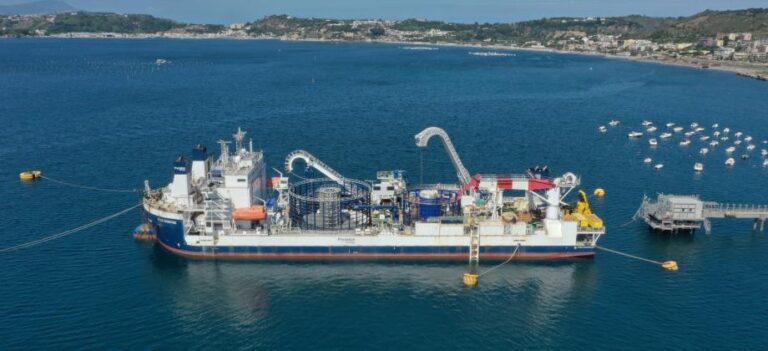Prysmian Group has commenced the installation of two major subsea interconnections off the coast of Spain, marking a significant milestone in the country’s offshore energy infrastructure development. The cable layers deployed by the global leader in energy and telecom cable systems are now actively laying critical submarine cables that will enhance grid connectivity and support Spain’s transition to renewable energy. This latest operation underscores Prysmian’s pivotal role in advancing Europe’s offshore energy networks and boosting regional energy security.
Prysmian Commences Installation of Key Subseabed Interconnections in Spanish Waters
Prysmian Group has initiated the installation of two vital subsea interconnections designed to enhance the energy infrastructure across Spanish maritime territories. Utilizing advanced cable-laying vessels equipped with cutting-edge technology, the company aims to connect offshore wind farms and boost the reliability of Spain’s renewable energy grid. These projects are pivotal in supporting Spain’s commitment to increasing offshore wind capacity and reducing carbon emissions by enabling efficient power transmission from production sites to the mainland.
The key features of the subsea installation include:
- Deployment of high-voltage subsea cables exceeding 100 kilometers each
- Precision trenching and burial to ensure cable protection and longevity
- Real-time monitoring systems for installation accuracy and safety
- Collaboration with local authorities and environmental agencies to minimize ecological impact
| Project Parameter | Details |
|---|---|
| Cable Length | Approx. 105 km each |
| Voltage Rating | 220 kV |
| Installation Vessels | Two specialized cable layers |
| Completion Target | Q4 2024 |
Advanced Cable Layer Technology Enhances Efficiency and Environmental Safety
Prysmian’s latest cable-laying vessels are revolutionizing subsea installations by integrating cutting-edge technology designed to maximize operational efficiency while minimizing environmental impact. Equipped with advanced dynamic positioning systems, these vessels can precisely control cable deployment, reducing the risk of seabed disturbance and ensuring a smoother, more reliable installation process. The incorporation of real-time monitoring and adaptive tension control enhances the accuracy of cable placement, significantly decreasing the likelihood of future repairs or maintenance activities.
Environmental safety is at the forefront of this project, with several innovative features embedded in the cable layers’ designs:
- Eco-friendly propulsion systems reduce emissions during transit and on-site operations.
- Seabed mapping technology allows for precise navigation around sensitive marine habitats.
- Remote-operated vehicle (ROV) integration facilitates detailed inspection without invasive human intervention.
| Feature | Benefit | Environmental Impact |
|---|---|---|
| Dynamic Positioning | Precise cable laying | Reduced seabed disruption |
| Adaptive Tension Control | Improved cable integrity | Less future seabed intervention |
| Low-Emission Engines | Cleaner fuel consumption | Lower carbon footprint |
Industry Experts Recommend Strengthening Regulatory Framework for Future Offshore Projects
As Prysmian commences the installation of two subsea interconnections off the coast of Spain, industry leaders are calling for a more robust regulatory framework to support the increasing complexity of offshore energy projects. Experts emphasize that updated regulations would not only enhance operational safety but also streamline permitting processes, reducing costly delays that frequently hamper project timelines. With subsea technology advancing rapidly, regulators must keep pace to ensure infrastructure resilience and environmental protection.
Key recommendations from industry specialists include:
- Implementing standardized environmental impact assessments tailored to subsea installations
- Enhancing collaboration between governmental agencies and private operators
- Introducing stricter monitoring protocols throughout the project lifecycle
- Promoting transparency in stakeholder communication and reporting
| Aspect | Current Challenges | Suggested Improvements |
|---|---|---|
| Permitting | Lengthy approval times | Streamlined, multi-agency coordination |
| Environmental Monitoring | Inconsistent standards | Unified, industry-wide protocols |
| Safety Regulations | Outdated compliance measures | Regular updates aligned with technology advances |
To Wrap It Up
As Prysmian’s cable layers commence the installation of two critical subsea interconnections off the coast of Spain, the project marks a significant step forward in enhancing the country’s energy infrastructure. These developments are set to bolster grid stability and support Spain’s ongoing transition toward a more sustainable and interconnected offshore energy landscape. With installation underway, all eyes remain on Prysmian as the company continues to deliver on its commitment to expanding Europe’s renewable energy capabilities.



